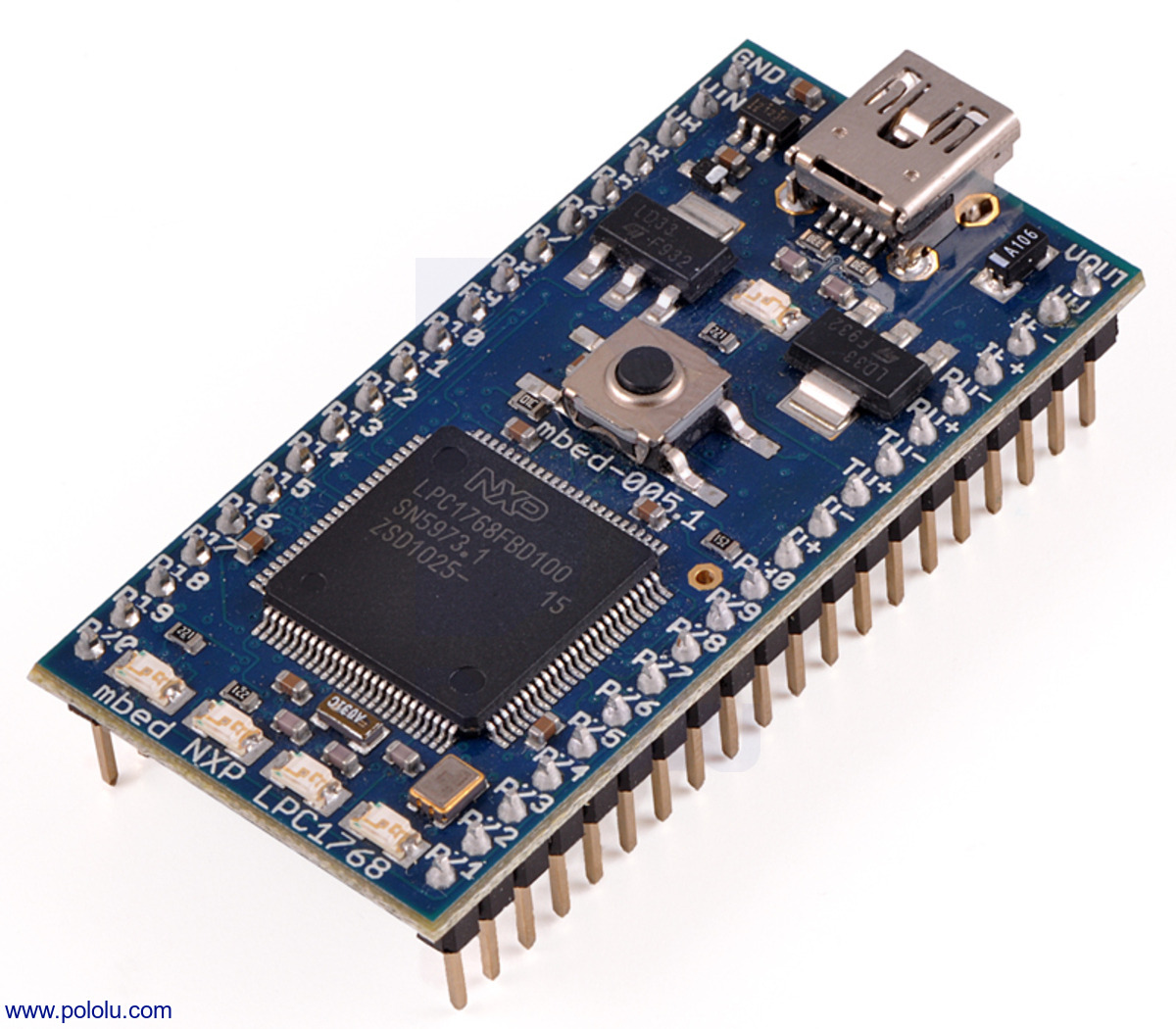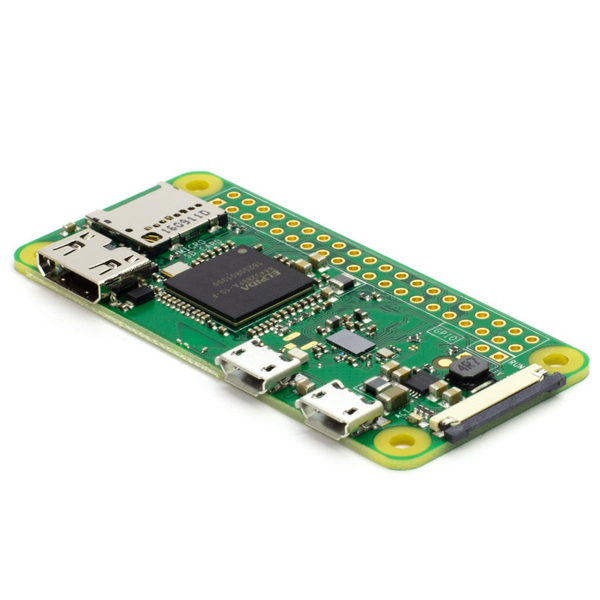Morse to Speech: Morse Code Interpreter
Group Members
- Neil Manning
- Ryan Peck
- Nahom Solomon
Description
Morse to Speech is an embedded device that uses the MPR121 capacitive touchpad to generate raw Morse encoded messages. The encoded messages are transmitted through the I2C bus using interrupts and then decoded in software. The group's software does not decode any messages until the user notifies the system that a given "word" has been transmitted. The decoded message is then appended to an empty "buffer", which is cleared after each word to allow for infinitely long messages to be transmitted without running out of bits. The final message is then transmitted to the uLCD and to the user's phone via Bluetooth, which is connected to the Bluetooth LE module. It is also sent to the Raspberry Pi through the mBed and Pi's serial ports, where it is collected by a bash script and then converted to speech using the Android text-to-speech Pico library.
Components
- LPC 1768 Microcontroller
- Adafruit Bluefruit Bluetooth module
- Raspberry Pi Zero W
- MPR121 Capacitive Touchpad
Hover For Description




Wiring Connections
Bluefruit LE
| mBed | Bluefruit LE |
|---|---|
| GND | GND |
| GND | CTS |
| VCC | VIN |
| P13 | RXI |
| P14 | TXO |
MPR121
| mBed | Touchpad | Pullup Resistors |
|---|---|---|
| GND | GND | |
| P9 | SDA | 10kOhm to 3.3V |
| P10 | SCL | 10kOhm to 3.3V |
| P26 | IRQ | |
| 3.3V | VCC |
Raspberry Pi
| Pi | Peripherals |
|---|---|
| HDMI | Monitor |
| USB | mBed USB |
How To Use
Step 1: Download Bluefruit LE connect for iOS &
Step 2: Connect to Bluetooth LE module (this enables interpreted Morse Code to be sent directly to your phone).
Step 3: Download main.cpp file to mBed and reset mBed.
Step 4 Type your Morse Code on 12-key Touchpad (0 = dot, 1 = dash, 2 = end word, 4 = end message).
Step 5: Watch! Message gets: (A) Interpreted in software. (B) Sent to your phone in english text. (C) Displayed on the uLCD.
Step 6: Listen! Message gets transmitted to the Raspberry Pi and read aloud.
Encoded Data Handling Code
main.cpp
#include "mbed.h"
#include <string>
#include <mpr121.h>
#include "uLCD_4DGL.h"
DigitalOut led1(LED1);
DigitalOut led2(LED2);
DigitalOut led3(LED3);
DigitalOut led4(LED4);
Serial pc(USBTX, USBRX);
uLCD_4DGL uLCD(p28, p27, p30); // serial tx, serial rx, reset pin;
int count = 0;
InterruptIn interrupt(p26);
// Setup the i2c bus on pins 9 and 10
I2C i2c(p9, p10);
// Setup the Mpr121){
// constructor(i2c object, i2c address of the mpr121)
Mpr121 mpr121(&i2c, Mpr121::ADD_VSS);
//buffer to hold characters
string buffer = "";
string answer = "";
RawSerial dev(p13,p14);
void dev_recv()
{
while(dev.readable()) {
uLCD.printf("%s \n", dev.getc());
}
}
void pc_recv()
{
for(int i = 0; i < answer.length(); i++){
dev.putc(answer[i]);
pc.putc(answer[i]);
}
dev.putc('\n');
pc.putc('\n');
pc.putc('\r');
}
void interpretLetter() {
if(buffer == "12"){
answer.append("A");
}
else if(buffer == "2111"){
answer.append("B");
}
else if(buffer == "2121"){
answer.append("C");
}
else if(buffer == "211"){
answer.append("D");
}
else if(buffer == "1"){
answer.append("E");
}
else if(buffer == "1121"){
answer.append("F");
}
else if(buffer == "221"){
answer.append("G");
}
else if(buffer == "1111"){
answer.append("H");
}
else if(buffer == "11"){
answer.append("I");
}
else if(buffer == "1222"){
answer.append("J");
}
else if(buffer == "212"){
answer.append("K");
}
else if(buffer == "1211"){
answer.append("L");
}
else if(buffer == "22"){
answer.append("M");
}
else if(buffer == "21"){
answer.append("N");
}
else if(buffer == "222"){
answer.append("O");
}
else if(buffer == "1221"){
answer.append("P");
}
else if(buffer == "2212"){
answer.append("Q");
}
else if(buffer == "121"){
answer.append("R");
}
else if(buffer == "111"){
answer.append("S");
}
else if(buffer == "2"){
answer.append("T");
}
else if(buffer == "112"){
answer.append("U");
}
else if(buffer == "1112"){
answer.append("V");
}
else if(buffer == "122"){
answer.append("W");
}
else if(buffer == "2112"){
answer.append("X");
}
else if(buffer == "2122"){
answer.append("Y");
}
else if(buffer == "2211"){
answer.append("Z");
}
}
// Key hit/release interrupt routine
void fallInterrupt() {
count++;
int key_code=0;
int i=0;
int value=mpr121.read(0x00);
value +=mpr121.read(0x01)<<8;
// LED demo mod
i=0;
// puts key number out to LEDs for demo
for (i=0; i<12; i++) {
if (((value>>i)&0x01)==1) key_code=i+1;
}
led4=key_code & 0x01;
led3=(key_code>>1) & 0x01;
led2=(key_code>>2) & 0x01;
led1=(key_code>>3) & 0x01;
if(count%2 == 1){
if(key_code == 3){
interpretLetter();
buffer = "";
}
else if(key_code == 4){
answer += ' ';
buffer = "";
}
else if(key_code == 5){
uLCD.printf("%s \n", answer.c_str());
//pc.printf("%s \n\r", answer.c_str());
pc_recv();
answer = "";
}
else{
char c = '0' + key_code;
buffer += c;
//pc.printf("%s", buffer.c_str());
}
}
}
int main() {
interrupt.fall(&fallInterrupt);
interrupt.mode(PullUp);
dev.attach(&dev_recv, Serial::RxIrq);
while (1) {}
}
-
Bash Script For Pi
morseReader.sh
#!/bin/bash sudo cat /../dev/ttyACM0 | while read var1; do // INSERT COM PORT NAME HERE echo $var1 pico2wave -w morse.wav "$var1" && aplay morse.wav done
-
Useful Links
- Touchpad Cookbook: https://os.mbed.com/forum/electronics/topic/1873/
- Bluetooth Module Cookbook: https://os.mbed.com/users/4180_1/notebook/adafruit-bluefruit-le-uart-friend---bluetooth-low-/
Demonstration
Please log in to post comments.
